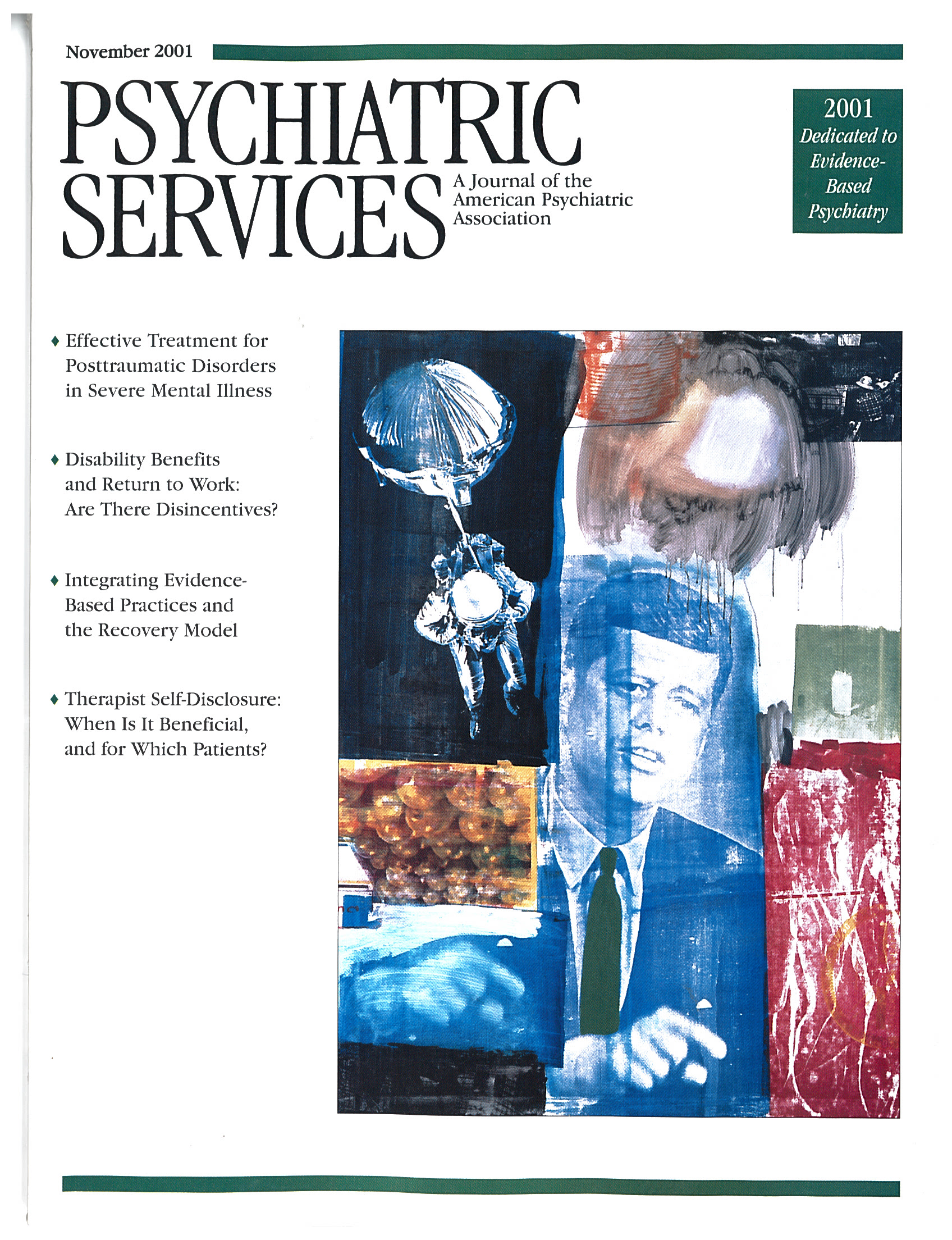Conclusions About Risperidone
In Reply: Dr. Burns makes several noteworthy points in his letter. He describes the importance of reporting physicians' prescribing behavior across institutions. In our brief report we did not detail results by institution because of the lack of differences. Across the six state mental health facilities in Maryland, prescription of risperidone and olanzapine was similar. In Maryland these two drugs are the most commonly prescribed of the second-generation antipsychotics; prescriptions for each drug constitute about 25 percent of all second-generation antipsychotics prescribed. During the study period, similar proportions of patients with schizophrenia were given risperidone (N=391) and olanzapine (N=398), and the mean difference in the proportions of patients at each facility who received the two drugs was less than 5 percent. In addition, the mean, minimum, and maximum dosages for the two drugs were similar across facilities.
Dr. Burns also points out that olanzapine was newer to the market than risperidone during the study period. The study was implemented in the middle of 1997 to allow at least six months of olanzapine use before discharge patterns were examined. We believed that this period would be adequate to allow clinicians to gain clinical experience with this drug and to switch patients who were more seriously ill and who did not respond to olanzapine for a trial. In fact, in late 1996 the prescription rate for olanzapine was higher than that for risperidone, although no difference was noted in 1997. Therefore, it is not likely that olanzapine was being used differently than risperidone during the study period—that is, reserved for more severely ill patients. In addition, all medication starts for the first half of 1998 were included in the survivor analysis, and the discharge rate for patients treated with risperidone continued to be at least 10 percent higher than the rate for those taking olanzapine. If olanzapine were being prescribed for more severely ill patients early in the year, the lines on the graph should have converged later in the year, which was not the case.
Furthermore, previous use of second-generation antipsychotics was documented for both groups. Twenty-two percent of patients treated with olanzapine had a previous trial of risperidone, and 17 percent of those receiving risperidone previously received olanzapine.
As the use of second-generation antipsychotics increases nationwide, it is important to explore differences between these agents. The results of a few large randomized comparative efficacy trials are now available, but the studies are mostly short term and industry sponsored. Efficacy studies evaluate the intended effect of a drug under ideal conditions, usually with small, homogeneous samples that may not be representative of the entire universe of patients with schizophrenia. The efficacy of second-generation antipsychotics has been established in the overall treatment of schizophrenia, but these agents probably differ in their adverse effects and in their effects on cognitive functioning, overall quality of life, and hospitalization (1).
Dr. Burns is correct to point out that claiming that risperidone "results in" a higher discharge rate is somewhat misleading. In the submitted paper, the sentence in the abstract read, "These data suggest that risperidone offers a higher rate of discharge…than olanzapine." Before publication the editorial staff changed the word "offers" to "results in," which is a stronger expression.
Finally, an important point of this work is that we reported on outcomes in chronically hospitalized inpatients with mean stays of about 90 days. These patients have many somatic illnesses. As we pointed out in our paper, although our results are informative for the treatment of state hospital inpatients, they may not be generalizable to patients experiencing a first psychotic episode or to patients living in the community, such as the patients Dr. Burns may care for in an outpatient setting. Treatment with risperidone and treatment with olanzapine are associated with very different cost profiles, and studies of other outcomes and other populations should be undertaken to discern differences that might justify the differential costs of therapy.
1. Collaborative Working Group on Clinical Trial Evaluations: Measuring outcome in schizophrenia: differences among the atypical antipsychotics. Journal of Clinical Psychiatry 59(suppl 12):3-9, 1998Medline, Google Scholar



